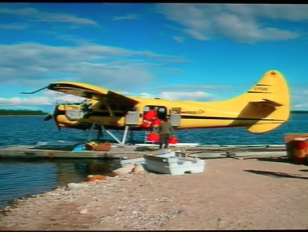Canoeing in the Arctic, a Scientist’s Perspective

Presenter: Peter Agre
Published: July 2014
Age: 18-22 and upwards
Views: 1598 views
Tags: water;arctic;alaska;
Type: Lectures
Source/institution: Lindau-Nobel
Watch now
As scientists, our livelihoods are supported by teaching and research, but we also have the opportunity to make observations beyond our usual confines and share these with non-scientific citizens. Growing up in my native state of Minnesota, I have always had a fascination for water and the canoe wilderness at the US-Canada boundary. These adventures have continued throughout my adult life, leading to our discovery of cellular water channels – the aquaporins. But my interest in the far north continues, and I will share some of the adventures of recent canoe journeys. The rivers in northern Canada and Alaska provide the sustenance needed for life in a desert with drastically altering environment. Frozen solid in winter, white water torrents in spring, and smoothly moving but tranquil oases in summer, these streams provide a pathway for viewing some of the most remote landscapes on our planet. We found that the climate changed not only with the season, but the climate changed rapidly from day-to-day. Temperatures in July and August varied 32 Celsius and bright sun to freezing drizzle to bone-chilling 100 km winds leading to rapid hypothermia for those unprotected. The scenery changes from boreal pine forest to taiga, covered with stunted trees, to tundra, where permafrost maintains a seemingly endless prairie. While life in the far north is challenging for individual organisms, selected species appear to thrive by adaptation. Fish here grow to enormous sizes feasting upon the rich insect populations, and themselves provide sustenance for inland grizzlies. Coastal seal populations frolic but serve as the major source of nutrition for the majestic polar bears. Caribou follow the succulent grasses in summer but migrate long distances to endure winter with greater protection at lower latitudes. Arctic wolves survive by following the caribou. Inuit have lived in the far north for thousands of years and have adapted to the harsh climate. But the natives face severe challenges from the loss of their predicted winter food source – migrating caribou. How they will adapt is uncertain, but interesting.





